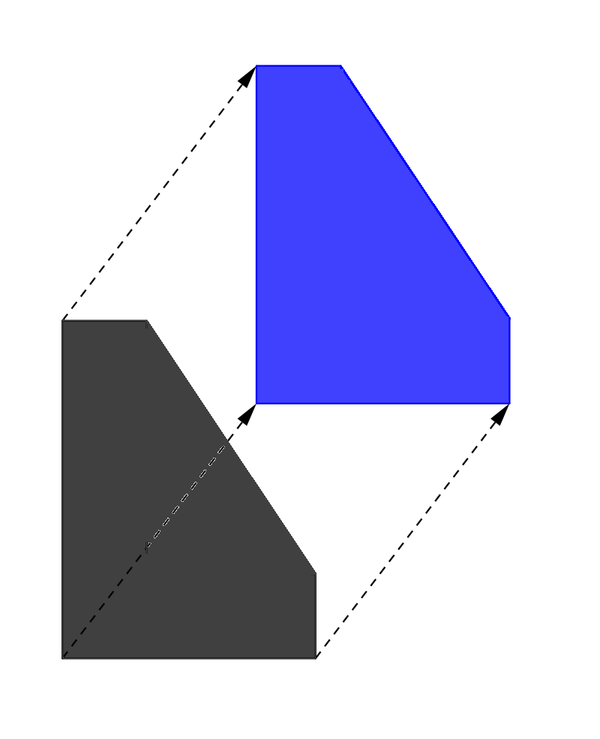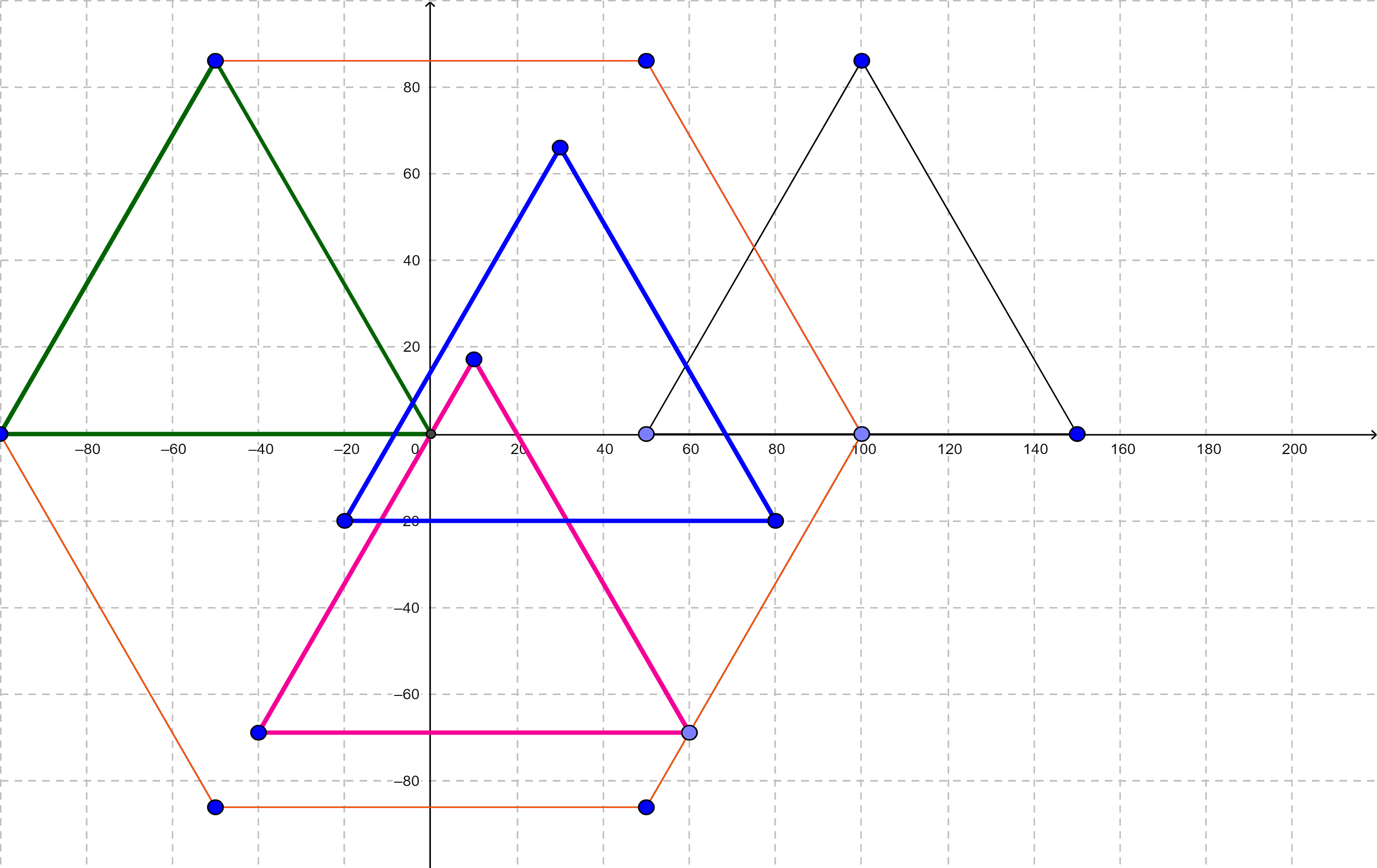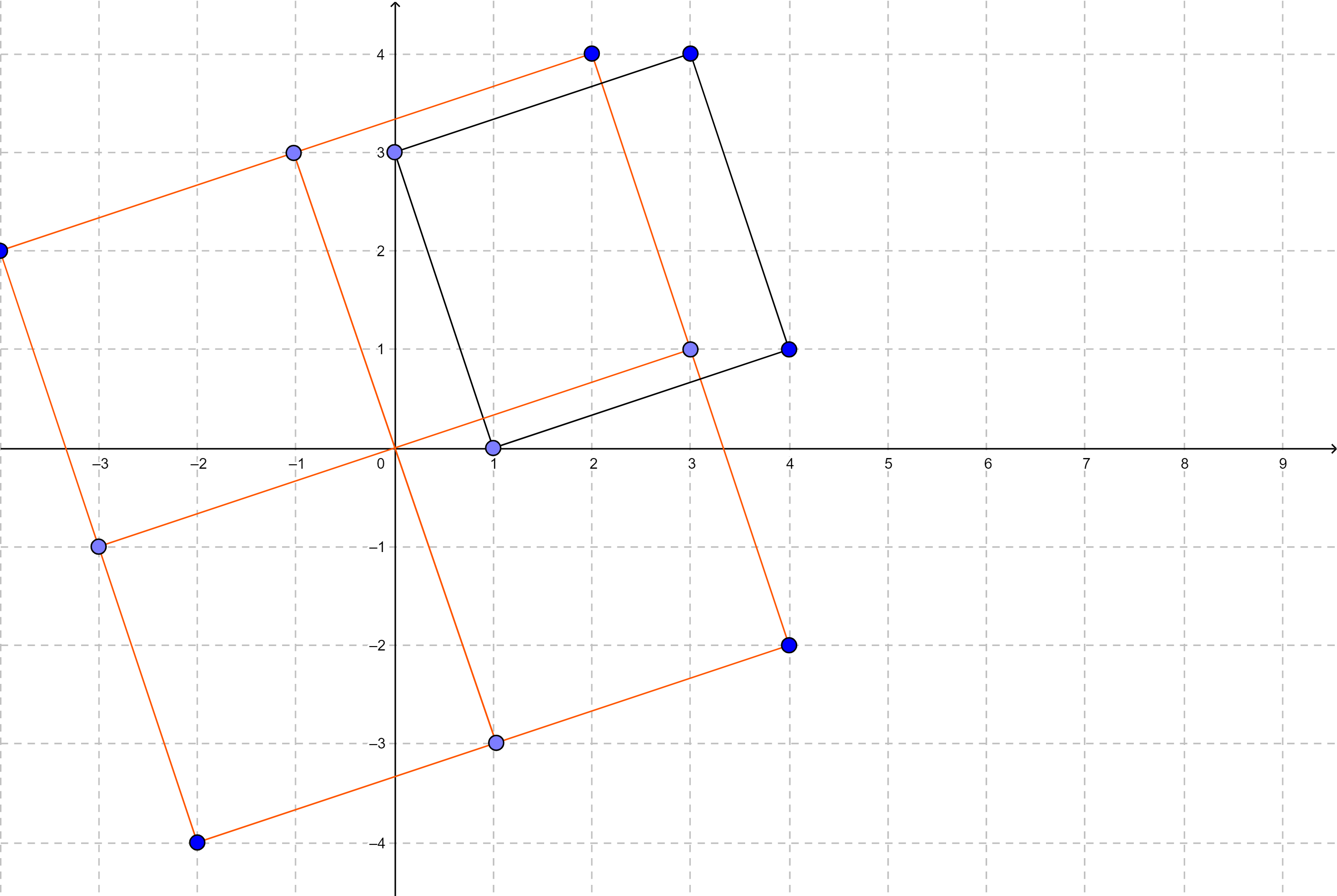Codeforces 1300D
Guy-Manuel and Thomas are going to build a polygon spaceship.
You're given a strictly convex (i. e. no three points are collinear) polygon PP which is defined by coordinates of its vertices. Define P(x,y)P(x,y)as a polygon obtained by translating PP by vector (x,y)−→−−(x,y)→. The picture below depicts an example of the translation:

Define TT as a set of points which is the union of all P(x,y)P(x,y) such that the origin (0,0)(0,0) lies in P(x,y)P(x,y) (both strictly inside and on the boundary). There is also an equivalent definition: a point (x,y)(x,y) lies in TT only if there are two points A,BA,B in PP such that AB−→−=(x,y)−→−−AB→=(x,y)→. One can prove TT is a polygon too. For example, if PP is a regular triangle then TT is a regular hexagon. At the picture below PP is drawn in black and some P(x,y)P(x,y) which contain the origin are drawn in colored:

The spaceship has the best aerodynamic performance if PP and TT are similar. Your task is to check whether the polygons PP and TT are similar.
The first line of input will contain a single integer nn (3≤n≤1053≤n≤105) — the number of points.
The ii-th of the next nn lines contains two integers xi,yixi,yi (|xi|,|yi|≤109|xi|,|yi|≤109), denoting the coordinates of the ii-th vertex.
It is guaranteed that these points are listed in counterclockwise order and these points form a strictly convex polygon.
Output "YES" in a separate line, if PP and TT are similar. Otherwise, output "NO" in a separate line. You can print each letter in any case (upper or lower).
4 1 0 4 1 3 4 0 3
YES
3 100 86 50 0 150 0
nO
8 0 0 1 0 2 1 3 3 4 6 3 6 2 5 1 3
YES
The following image shows the first sample: both PP and TT are squares. The second sample was shown in the statements.

/* 这个题真的很简单,但是当时比赛的时候抱着只做三个题的心态去的,所以题做的很慢,最后时间不够了,后悔莫及,这题就是只要给出的图形对边平行且相等就输出YES,其它情况一律输出NO */ #include<iostream> #include<cstdio> #include<cmath> #define maxn 100010 #define eps 0.0000001 using namespace std; int n; double a[maxn],b[maxn],dis[maxn]; double calc(double a1,double b1,double a2,double b2){ double res=(a1-a2)*(a1-a2)+(b1-b2)*(b1-b2); return res; } int main(){ scanf("%d",&n); if(n%2==1){ puts("nO"); return 0; } for(int i=1;i<=n;i++){ scanf("%lf%lf",&a[i],&b[i]); if(i!=1){ dis[i]=calc(a[i],b[i],a[i-1],b[i-1]); } } dis[1]=calc(a[1],b[1],a[n],b[n]); int w1=a[n],w2=b[n]; for(int i=n;i>=2;i--){ a[i]-=a[i-1]; b[i]-=b[i-1]; } a[1]-=w1;b[1]-=w2; for(int i=2;i<=n;i++){ int tmp=i+n/2; tmp%=n; if(tmp==0)tmp=n; if(dis[i]-dis[tmp]!=0||a[i]*b[tmp]!=a[tmp]*b[i]){ puts("nO"); return 0; } } puts("YES"); return 0; }

